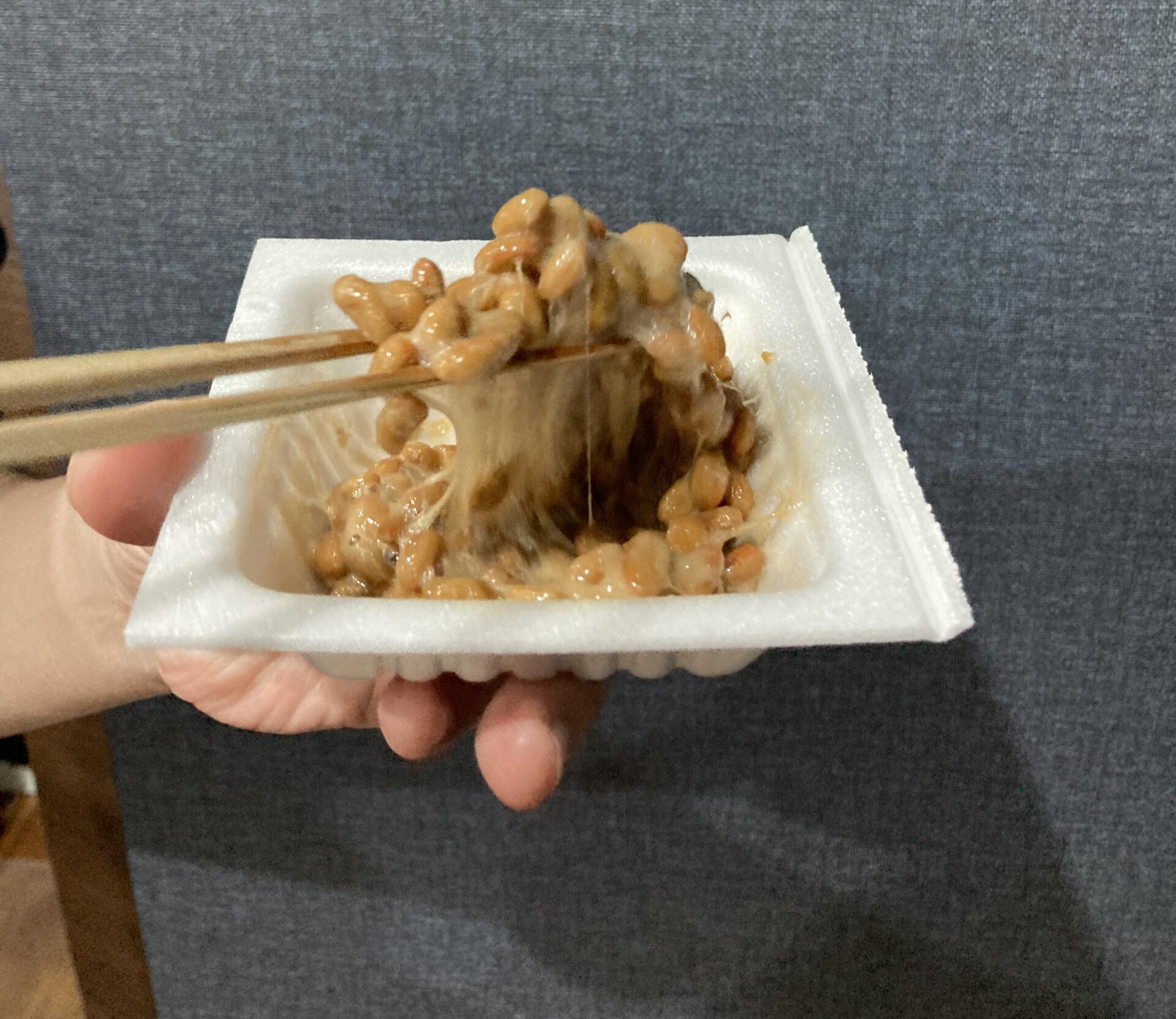Let’s face it—natto can be intimidating. It’s sticky. It’s smelly. It’s weird. And if you’ve never eaten it before, you might find yourself staring at the little plastic container wondering, “How does this even work?”
You’re not alone.
So in this article, I’m going to walk you through the entire natto experience as if you’ve never seen a pack before. Because honestly? That’s a totally reasonable place to start. We’ll cover everything from opening the lid to a weird but brilliant trick for removing the plastic film without turning your kitchen into a spiderweb of sticky soy strings.
Let’s dive in—no natto experience required.
Step 1: Buying the Mysterious Box
You’ll usually find natto in the refrigerated section of Japanese supermarkets and convenience stores (konbini), sold in a pack of three small styrofoam containers. Each one comes with:
- Fermented soybeans (surprise!)
- A packet of soy-based sauce
- A packet of Japanese mustard (called karashi)
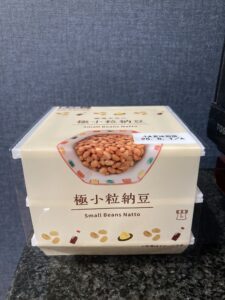
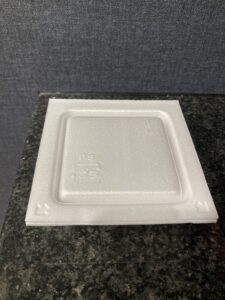
Step 2: Open the Lid… and Brace Yourself
Peel back the plastic lid. Inside, you’ll find your beans—and covering them, a super thin plastic film.
Now this is where things can go very wrong, very fast.
Try to peel it off directly, and you’ll be caught in a sticky trap of natto strings stretching from the film to your elbow. You wouldn’t want this at beginning of your lovely day.
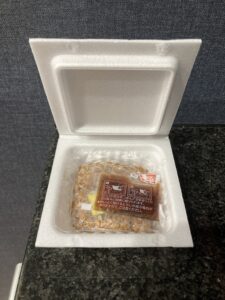
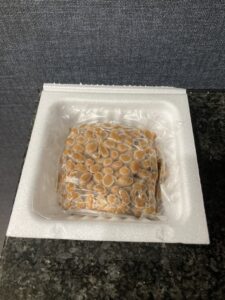
Step 3: The Secret Film Removal Hack
Here’s a trick so good, I wish it came printed on the packaging:
- Take your chopstick. Just one.
- Gently poke a hole in the corner of the pack with the plastic film.
- Pull the film out through the opening!
✨ Magic! ✨
The stringy mess stays mostly inside the container, and you don’t end up sticky and confused.
(If this trick just changed your life, you’re welcome.)
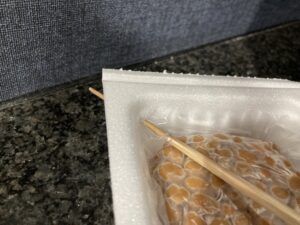
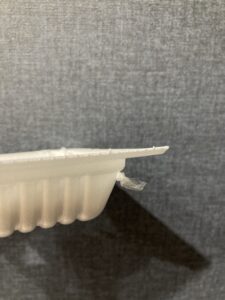
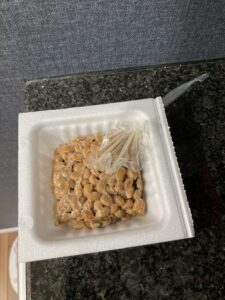
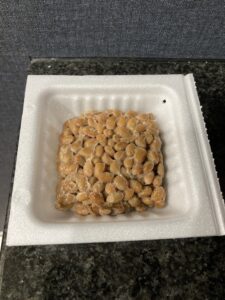
Step 4: Stir Like You Mean It
This might feel strange, but stirring is actually a big part of the natto experience. Grab your chopsticks and start mixing those beans—really mix.
People say 30 times is good.
Others say 100 is better.
One guy on the internet claims 1000 times is the sweet spot. You do you.
Stirring makes the natto foamier and stickier (yes, on purpose), and brings out more flavor.

Step 5: Add sauce and some extra
Time to open the tiny sauce and mustard packets and mix them in. Be careful—karashi mustard is powerful stuff! (I usually don’t use karashi)
Optional but awesome extras:
- Chopped green onions
- Raw egg
- Seaweed (mekabu is great)
- okura
- Kimchi
Step 6: Actually Eat It
The classic way is to serve natto on hot steamed rice.
But you can also try it on:
- Toast (seriously, with cheese—don’t knock it till you try it)
- Cold soba noodles
- Tofu
- Poke bowls


So… Why All the Fuss?
Because natto is more than food—it’s an experience.
Yes, it’s sticky. Yes, it smells like something left in a gym bag.
But it’s also incredibly healthy, oddly satisfying, and full of umami goodness once you get used to it.
Plus, now you know the secret to removing that cursed plastic film like a pro.
Closing Notes: The Basics Matter
Sometimes the most “obvious” things are only obvious once someone explains them.
This guide might seem hilariously basic, but if it saved you from natto-induced confusion, then it did its job.
Give it a try. Stir it well. And enjoy your first (or fiftieth) bowl of natto—with zero mess and maximum confidence.
